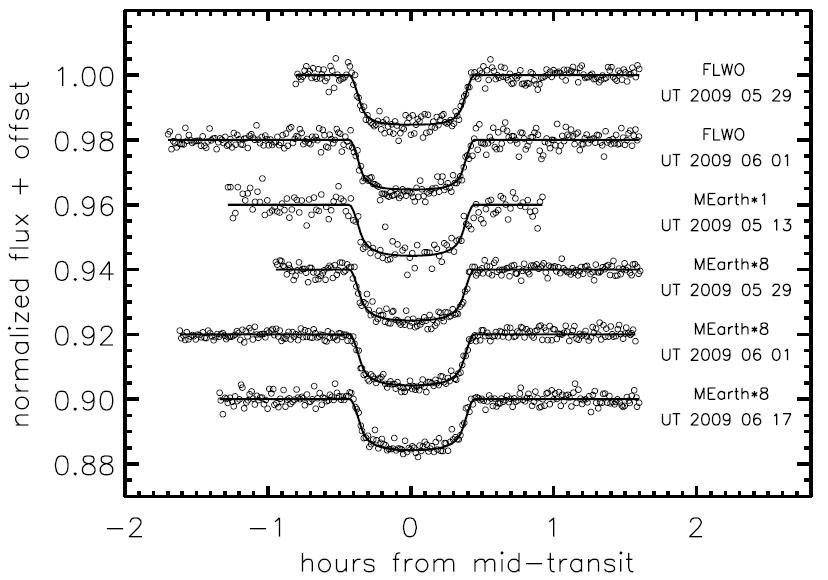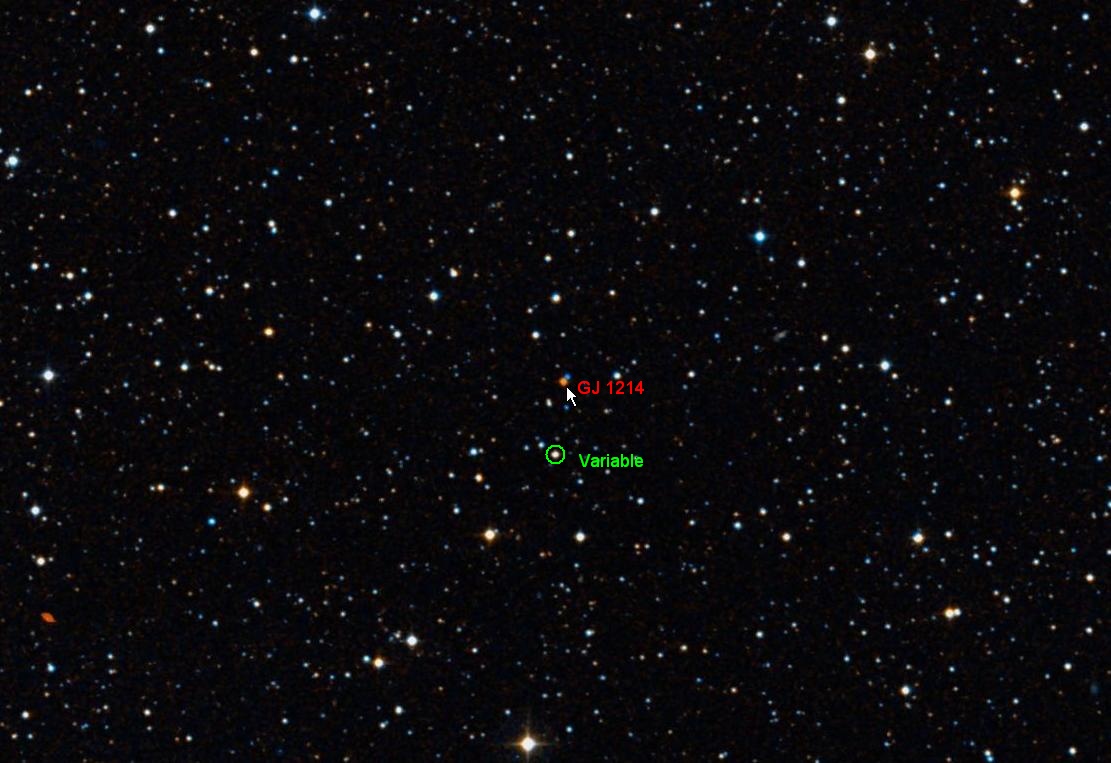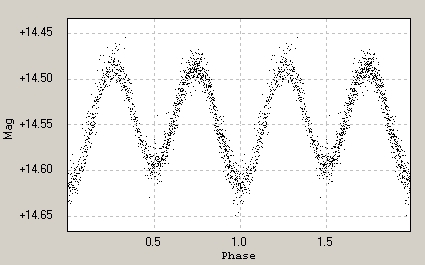GJ 1214
AXA Light Curves
Links internal to this web page:
Comments
Basic data
Table & plots of of AXA transit measurements
Amateur Transit LC's
Professional Transit LC's
OOT LCs
Finder images
References
Comments
Super-Earth (radius = 2.7 x R_Earth, mass = 6.5 x M_Earth),
discovered by MEarth observing system at Mount Hopkins. I include it in the
BTE in spite of its faint V-mag partly bercause it's such an important exoplanet
and also because with a long wavelength filter (NIR is best choice, but
R-band or z-band will do) it's not so faint because the star is so red.
Basic data
RA = 17:15:18.9, DE = +04:57:50
Season = June 13
V
= 14.67, J=9.750, K=8.782 (B-V > 1.5, very red)
HJDo = 4999.712703
(126) and P = 1.5803925 (117) days (as listed in Schneider's Extrasolar Planets Encyclopaedia,
HJDo corrected from earlier value)
Depth = 17.5
± 1.5
mmag (NIR-band)
Length = 0.85 ±
0.10 hr (NIR-band)
Fp = 0.?? ±
0.??, F2 = 0.?? ± 0.??
b = 0.354
Table & Plots of Amateur
Observations -
Amateur Light Curves

Gregor Srdoc (Croatia) observed GJ 1214 on 20 nights and produced this
phase-folded LC. The data include 3 transit events but are mostly OOT.
This phase-folded LC can be used to rule out the presence of a second transiting
exoplanet at the 10 mmag level (Gregor writes), keeping in mind that a second
planet transit won't have the same period and therefore won't appear "in
phase" with the primary exoplanet "b". Gregor used a 12-inch telescope
and SBIG ST-7XME CCD. Each night the star filed was placed a the same pixel
location and an autoguider kept the star field fixed to the pixel field throughout
the observing session. His filter was a longpass R (Baader Planetarium).
Defocusing allowed for exposure times of 240 seconds. The photometric readings
of target and reference stars were de-trended and phase folded using Peranso
(by Vanmunster).
Professional Light Curves

Copied from discovery paper by Charbonneau et al (2009)
http://fr.arxiv.org/abs/0912.3229
Out-of-Transit (OOT) Light Curves

See caption for this figure in Amateur Light Curves section,
above.
Finder Charts

Beware the (apparent) Delta Scuti variable (GSC 408:113) located 1.3
'arc south of GJ 1214 when choosing reference stars. Colin Littlefield
has measured the "variable" on several occasions to have a period of ~ 6 hrs
with an amplitude of ~ 0.1 magnitude. (Image from SkyMap)

Phase-folded LC for GSC 408:113, produced by Gregor Srdoc (Croatia).
Since the two minima are not exactly the same the period has two minima and
two maxima. Gregor calculates the period to be 0.4562 days (10.95 hours).
This data is from the same set of images used to create the GJ 1214 full-phase
folded LC, described above.
References
Discovery paper: Charbonneau et al, 2009, http://fr.arxiv.org/abs/0912.3229
Return to calling web page AXA
____________________________________________________________________
WebMaster: Bruce
L. Gary. Nothing on this web page is copyrighted. This site opened:
2009.12.20 . Last Update: 2010.07.16

